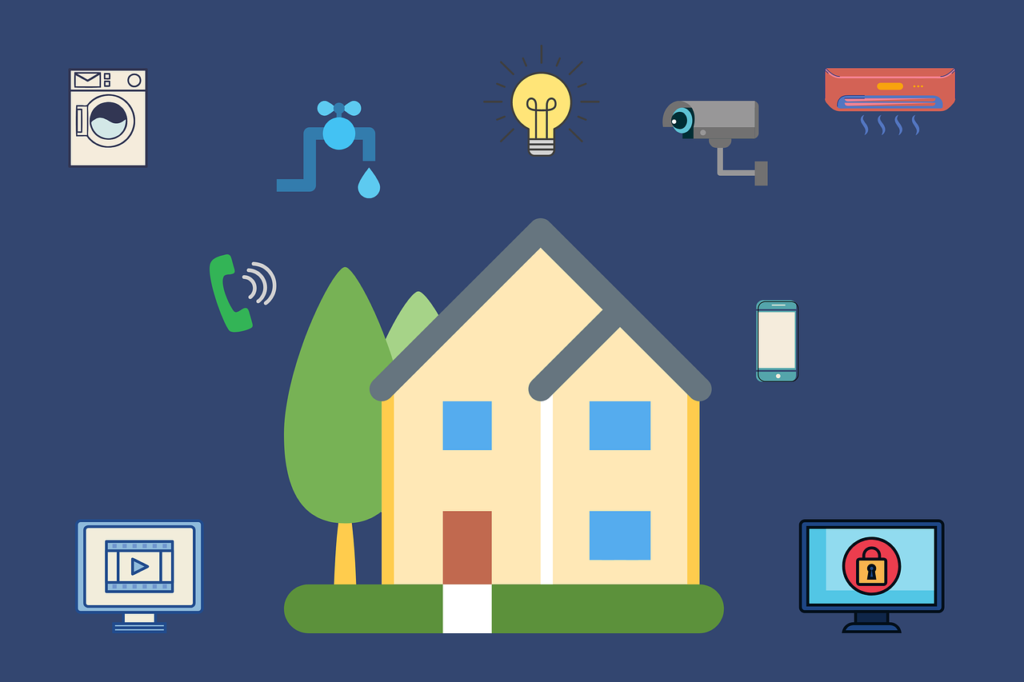
In today’s world, many systems installed in new homes have become automated. Whether at work or in residence, homeowners often turn to technology for life’s solutions. With the high cost of energy and the increased awareness of the need for more sustainable resources, “smart home” technology just makes more sense. Here are some ways that new technological solutions are helping homeowners save energy and decrease their homes’ utility bills.
Controlling Smart Home Systems
When a home is built with smart technology, all the energy devices are connected to a smart hub. The smart hub is the control center for the smart house. It can automate the home’s energy usage by turning the HVAC system down when the occupants aren’t home. The hub can also be set to run the dishwasher at night, when energy costs are lower, and to switch off the TV or computer when they’ve been idle too long.
Lighting Up With LED Lights
Homeowners can make a significant change with some small items: their light bulbs. LED light bulbs use a semiconductor to produce heat instead of a conventional light bulb. By switching to LED light bulbs, you can make a significant difference in your energy usage. LED lights use over 80% less every month, and will last more than 20% times longer than traditional light bulbs.
Revising the Septic Tank and System
Efforts to update all the home functions are even reaching the septic tank. A typical septic tank is a buried container made of concrete, polyethylene, or fiberglass. New developments in the field have created systems that use specially designed membranes inside the tank to recycle the system’s water. The company that installs these green septic systems has the capability of externally monitoring the status of the system.
Keeping the Walls Warm and Safe
Homeowners seeking to save energy through modern insulation systems are finding answers forged by new technology. They’re using materials like recycled denim and auto glass. Alternate materials include renewable fibers like sheep’s wool and bamboo. All these materials provide excellent insulation for less expense.
Covering the Home With a Smart Roof
A safe, modern home needs a well-constructed roof, and intelligent technology means the roof can be part of the overall smart home system. A knowledgeable roof contractor can install sensors into the roof to signal the inside controls to respond to changes in the weather. A quality roof built by a reliable contractor can increase the length of a roof’s endurance. According to Bob Vila, a roof made this way has the potential to last 15 to over 50 years, depending on the type of roof.
Access Your Garage in Style
Energy savings and home efficiency can extend to the garage. Your smart home system can help you to open the garage door from anywhere by using your phone. Home design experts report using a more energy-efficient garage door can also cut 25% off your energy bill each month. Applied technology can also allow you remote monitoring capabilities for your garage.
Extending Opportunities for Entertainment
Smart home systems can make your home’s TVs and computers run more seamlessly. Smart TVs mean homeowners only need an internet connection to enjoy their favorite shows or movies. There’s no need for cables or streaming devices. Smart speakers can be part of the system, utilizing voice commands to change channels or volume levels.
Imagining the Future Marvels
With so many differences in home energy efficiency and sustainability, it seems inevitable that future homes will show even more influence from technology. However, since current innovations have brought us so many worthwhile developments, we can hope the future of smart homes will prove just as beneficial. If we keep current with news of future developments, we’ll find we can use them to our mutual advantage.